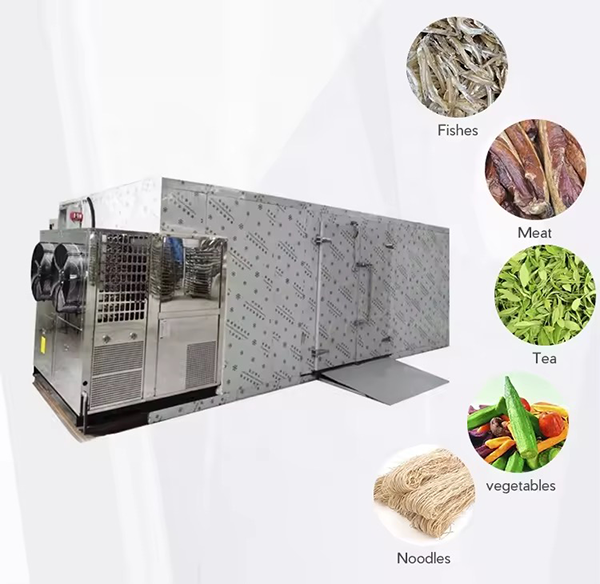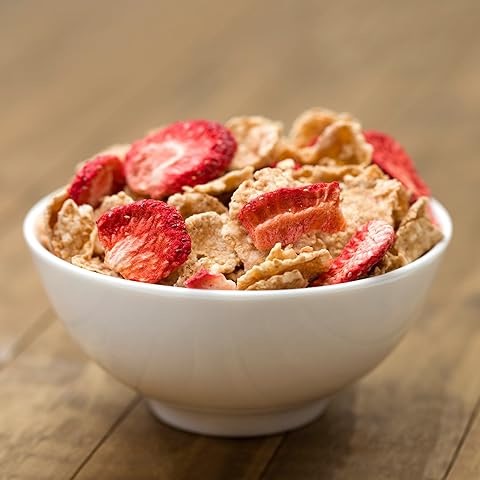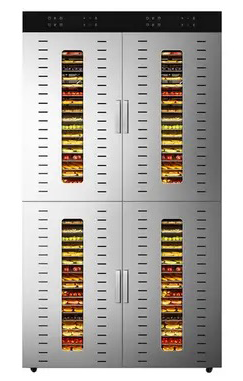
Content Menu
● Understanding Heat Pump Dryers
● Advantages of Heat Pump Dryers
>> Increased Energy Efficiency
>> Cost-Effectiveness
>> Precise Temperature Control
>> Nutrient Retention
>> Reduced Drying Time
>> Increased Shelf Life
>> Environmental Benefits
● Applications in Food Processing
● Comparative Analysis with Traditional Drying Methods
● Technological Innovations in Heat Pump Dryers
● Challenges and Considerations
● Future Trends in Food Drying Technology
● Conclusion
● FAQ
>> 1. What is a heat pump dryer?
>> 2. How does a heat pump dryer save energy?
>> 3. Can I use a heat pump dryer for all types of food?
>> 4. What are the benefits of using a heat pump dryer over traditional methods?
>> 5. Are there any maintenance requirements for heat pump dryers?
● Citations:
In the realm of food processing, the efficiency and effectiveness of drying methods are paramount. One of the most innovative technologies making waves in this sector is the heat pump dryer. This article delves into the advantages of heat pump dryers, particularly in the food industry, focusing on their energy efficiency, cost-effectiveness, and overall benefits compared to traditional drying methods.

Understanding Heat Pump Dryers
Heat pump dryers operate on a principle similar to that of air conditioning systems. They utilize a refrigeration cycle to transfer heat from one area to another, effectively drying food products without the need for excessive energy consumption. Here's how they work:
1. Heat Extraction: The dryer extracts heat from the ambient air.
2. Compression: This heat is then compressed to increase its temperature.
3. Drying Process: The hot air is circulated through the food, evaporating moisture.
4. Condensation: Moisture is condensed and removed from the system.
This closed-loop system significantly reduces energy usage compared to traditional dryers that rely on direct heating methods.
Advantages of Heat Pump Dryers
Increased Energy Efficiency
One of the standout features of heat pump dryers is their remarkable energy efficiency. Traditional drying methods often consume large amounts of energy due to high-temperature requirements and constant airflow. In contrast, heat pump dryers can reduce energy consumption by up to 70% compared to conventional electric heaters. This efficiency stems from their ability to recycle heat within the system, minimizing waste and maximizing output.
Cost-Effectiveness
While the initial investment for a heat pump dryer may be higher than that for traditional drying equipment, the long-term savings are substantial. The reduced energy costs translate into lower operational expenses over time. Businesses that adopt this technology often find that their return on investment is realized quickly due to significant reductions in energy bills.
Precise Temperature Control
Heat pump dryers offer precise control over temperature and humidity levels during the drying process. This capability ensures that food products are dried uniformly, preserving their quality, flavor, and nutritional value. Maintaining optimal drying conditions helps prevent damage often caused by overheating or uneven drying.
Nutrient Retention
One of the critical advantages of using heat pump dryers is their ability to retain nutrients in food products. Traditional drying methods can lead to significant nutrient loss due to high temperatures and prolonged exposure to heat. However, heat pump technology operates at lower temperatures (typically between 40°C and 80°C), which helps preserve essential vitamins and minerals in fruits, vegetables, and other food items.
Reduced Drying Time
Heat pump dryers can significantly reduce drying times compared to conventional methods. By efficiently circulating warm air and maintaining optimal humidity levels, these dryers ensure quicker moisture removal without compromising product quality. This speed is particularly beneficial for perishable items that require rapid processing.
Increased Shelf Life
By effectively removing moisture from food products, heat pump dryers inhibit the growth of bacteria, yeasts, and molds. This preservation method extends the shelf life of dried foods, making them more suitable for long-term storage and reducing waste.
Environmental Benefits
The eco-friendly nature of heat pump dryers cannot be overstated. Their low energy consumption translates into a reduced carbon footprint, contributing positively to environmental sustainability efforts within the food industry. Additionally, since these systems do not emit pollutants or require combustion processes, they promote cleaner air quality.
Applications in Food Processing
Heat pump dryers are versatile and can be used across various sectors within the food industry:
- Fruits and Vegetables: Ideal for drying fruits like apples, bananas, and tomatoes while preserving their taste and nutrients.
- Herbs and Spices: Effective for gentle drying processes that maintain aromatic properties.
- Meat and Seafood: Suitable for producing jerky or dried fish while ensuring safety through moisture removal.
- Grains and Nuts: Helps in reducing moisture content effectively without compromising quality.

Comparative Analysis with Traditional Drying Methods
To understand why heat pump dryers are becoming increasingly popular in food processing, it's essential to compare them with traditional drying methods such as convection ovens or sun drying.
| Feature | Heat Pump Dryer | Traditional Dryer |
| Energy Consumption | Low (up to 70% less) | High (requires constant heating) |
| Temperature Control | Precise | Often inconsistent |
| Nutrient Retention | High (low temperatures) | Low (high temperatures can degrade nutrients) |
| Drying Time | Shorter | Longer |
| Environmental Impact | Low carbon footprint | Higher emissions |
This table illustrates how heat pump dryers outperform traditional methods in various critical areas.
Technological Innovations in Heat Pump Dryers
As technology continues to advance, modern heat pump dryers are incorporating innovative features that enhance their functionality:
- Smart Controls: Many new models come equipped with smart technology that allows users to monitor and control the drying process remotely via mobile apps. This feature enables real-time adjustments based on humidity levels or desired dryness levels.
- Energy Recovery Systems: Some advanced units include energy recovery systems that capture waste heat from the drying process and redirect it back into the system, further improving energy efficiency.
- Modular Designs: Manufacturers are now offering modular designs that allow businesses to scale up their operations easily by adding more units as demand increases without needing a complete overhaul of existing systems.
Challenges and Considerations
While heat pump dryers offer numerous benefits, there are some challenges and considerations for businesses looking to invest in this technology:
- Initial Investment: The upfront cost of purchasing a heat pump dryer can be higher than traditional options. However, this should be weighed against long-term savings on energy bills.
- Space Requirements: Heat pump dryers may require more space than conventional dryers due to their design and operational needs. Businesses must consider available space when planning installations.
- Maintenance Needs: While generally low-maintenance compared to other systems, regular cleaning of filters and coils is necessary to ensure optimal performance.
Future Trends in Food Drying Technology
The future of food drying technology looks promising as industries continue to innovate towards more sustainable practices:
- Integration with Renewable Energy: There is a growing trend toward integrating heat pump dryers with renewable energy sources such as solar or wind power. This combination can further reduce carbon footprints while enhancing sustainability efforts.
- Research on Enhanced Materials: Ongoing research into advanced materials for dryer construction aims at improving insulation properties and reducing energy loss during operation.
- Focus on Food Safety Standards: As consumer awareness regarding food safety increases, manufacturers will likely focus on developing technologies that ensure compliance with stringent safety standards during the drying process.
Conclusion
In conclusion, heat pump dryers represent a significant advancement in food drying technology. Their energy efficiency, cost-effectiveness, precise temperature control, nutrient retention capabilities, reduced drying times, increased shelf life, and environmental benefits make them an ideal choice for modern food processing operations. As industries continue to seek sustainable solutions that do not compromise quality or safety, heat pump dryers are poised to become an essential tool in food production.

FAQ
1. What is a heat pump dryer?
A heat pump dryer is a type of dehydrator that uses a refrigeration cycle to extract moisture from food products while maintaining low temperatures for energy efficiency.
2. How does a heat pump dryer save energy?
Heat pump dryers save energy by recycling warm air within a closed-loop system rather than generating new hot air continuously like traditional dryers.
3. Can I use a heat pump dryer for all types of food?
Yes, heat pump dryers are versatile and suitable for various foods including fruits, vegetables, meats, herbs, grains, and nuts.
4. What are the benefits of using a heat pump dryer over traditional methods?
The benefits include lower energy consumption, cost savings over time, better nutrient retention in foods, precise control over drying conditions, and extended shelf life for dried products.
5. Are there any maintenance requirements for heat pump dryers?
Yes, regular maintenance includes cleaning filters and coils to ensure optimal performance and prevent issues such as longer drying times or reduced efficiency.
Citations:
[1] https://vn.dryers-dehydrators.com/info/advantage-of-food-heat-pump-dryer-81163580.html
[2] https://www.familyhandyman.com/article/heat-pump-dryer/
[3] https://undecidedmf.com/are-heat-pump-dryers-really-worth-it-miele-dryer-review/
[4] https://foodbuddies.in/food-drying-technology/
[5] https://www.made-in-china.com/manufacturers/electric-food-dryer.html
[6] https://www.alamy.com/stock-photo/food-dehydrator.html
[7] https://www.youtube.com/watch?v=9DSGcVhjHEc
[8] https://www.youtube.com/watch?v=DeN-h6opueM
[9] https://www.bxdryer.com/news/industry-news/heat-pump-dryer-for-food-news.html
[10] https://www.youtube.com/watch?v=mtDzdYoyeR8











